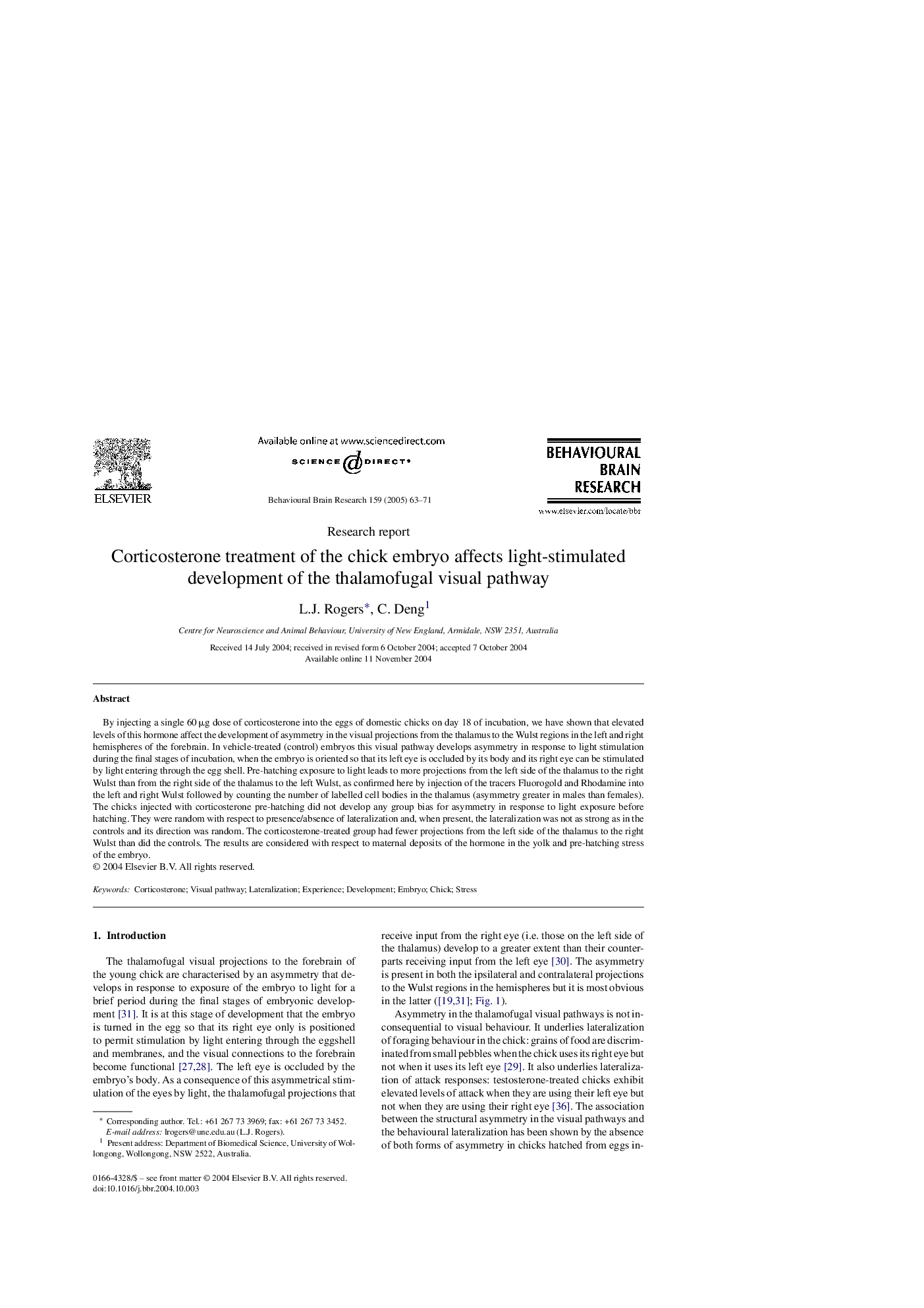| Article ID | Journal | Published Year | Pages | File Type |
|---|---|---|---|---|
| 9406663 | Behavioural Brain Research | 2005 | 9 Pages |
Abstract
By injecting a single 60 μg dose of corticosterone into the eggs of domestic chicks on day 18 of incubation, we have shown that elevated levels of this hormone affect the development of asymmetry in the visual projections from the thalamus to the Wulst regions in the left and right hemispheres of the forebrain. In vehicle-treated (control) embryos this visual pathway develops asymmetry in response to light stimulation during the final stages of incubation, when the embryo is oriented so that its left eye is occluded by its body and its right eye can be stimulated by light entering through the egg shell. Pre-hatching exposure to light leads to more projections from the left side of the thalamus to the right Wulst than from the right side of the thalamus to the left Wulst, as confirmed here by injection of the tracers Fluorogold and Rhodamine into the left and right Wulst followed by counting the number of labelled cell bodies in the thalamus (asymmetry greater in males than females). The chicks injected with corticosterone pre-hatching did not develop any group bias for asymmetry in response to light exposure before hatching. They were random with respect to presence/absence of lateralization and, when present, the lateralization was not as strong as in the controls and its direction was random. The corticosterone-treated group had fewer projections from the left side of the thalamus to the right Wulst than did the controls. The results are considered with respect to maternal deposits of the hormone in the yolk and pre-hatching stress of the embryo.
Related Topics
Life Sciences
Neuroscience
Behavioral Neuroscience
Authors
L.J. Rogers, C. Deng,
